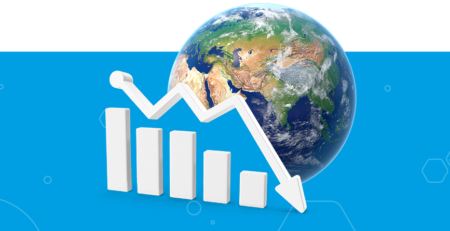The CMO’s guide to cookies, ITP, and privacy
The cookiepocalypse and Intelligent Tracking Prevention… also known as the digital marketer’s modern-day nightmare. But do they really need to be?
Measurability has long been the pillar of digital marketing, and now we’re on a trajectory moving away from it. The very nature of online advertising is changing, and we all need to come to terms with that.
While the industry toils away to develop a new, privacy-focused standard of tracking, it’s no time to sit idly by. CMOs need to understand how to adapt to this new reality, what to do going forward, and where to invest resources.
Dotting the I’s and crossing the T’s of ITP
In a nutshell, cookies are little pieces of information left by a website on a user’s computer in order to track things like marketing performance or whether a user is logged in. The web wouldn’t function properly without them. But there’s an important distinction between first and third party cookies, and how they’re used.
First party cookies are set by the website a user is currently visiting and can’t be seen or used by external sites. They make sure users don’t have to keep logging in, or keep re-adding items to their shopping basket. This also includes cookies from services like Google Analytics.
Third party cookies are a different beast altogether. They’re set by third party websites and can be used to track users as they navigate the web across sites, for things such as retargeting advertising.
That’s where Safari’s ITP comes in. Their goal is to limit cross-website tracking. And since its launch, there’s been an ongoing battle between ITP and advertisers, publishers, and platforms like Google and Facebook to combat these restrictions. In the latest updates, ITP is cracking down harder on first-party cookies as well, and it looks like they’ve only just started their crusade.
The impact of ITP on digital marketing
The main issue with ITP is that it’s making attribution a lot more difficult than it used to be. No more cookie storage means no more visible user journeys. The effect might be slow while users update Safari, but over time “new users” on the browser will be inflated as tracking returning users becomes impractical. This will also affect web optimisation platforms’ A/B tests, so is problematic for conversion rate optimisation.
A lot of things marketers have relied on are going to be breaking: frequency capping, post-view tracking, post-click tracking after one day, audience segmentation, creative sequencing, and effective audience targeting. For now, data-driven attribution is still better than last-click, but if all cookies were to disappear, they would basically be identical.
And here’s the kicker: this isn’t limited to Safari. Firefox has introduced a similar protocol called Enhanced Tracking Protection, and Chrome is slowly following suit with its own, more privacy-conscious approach to cookies. Altogether, that makes up the three most-used browsers in the world banding together against cookies. Oof!
Workarounds, loopholes, and third-party solutions are not the answer
A lot of ad tech companies have invested resources in developing loopholes to circumvent ITP or finding expensive third-party solutions, but I don’t think it’s worth the effort. If ITP 2.0 has anything to tell us, it’s that Apple is going to keep shutting down workarounds as they emerge. You’re better off resisting the temptation to pursue these avenues before seeing what’s in store for ITP 3.0.
The key message is simple: stop resisting and accept that this is now the way forward. When it comes to attribution and measurement, you’re going to need a new mindset. Instead of relying on external solutions, you need to take matters into your own hands and… get a little bit creative!
The new way of testing is the old way of testing
First off, you need to completely rethink your testing frameworks. The reality is that you won’t be able to track conversions 100% accurately. Once you’ve made your peace with that, you can say goodbye to deterministic data, and hello to probabilistic data.
Don’t expect exact percentages on conversion rates, and instead start looking at general trends and uplifts. You’re going to be working with looser testing frameworks, run multiple tests to investigate each channel and KPI, and go the extra mile to combine results and get a full picture of your marketing activities.
Finally, there’s no need to despair over the loss of Safari and Firefox. Yes, they’re widely used. But nowhere near as much as Chrome, which is unlikely to go all the way with cookie-blocking. Setting up your analytics software to only look at Chrome will still give you a 60-70% sample of user activity, and you can use historical data from the other browsers to extrapolate those results onto Safari and Firefox.
The end of the golden age of the internet?
The anti-cookie trend is also driving more power to walled gardens, creating more dependence on them as the controllers of most first-party data. Moving from an open ecosystem to a closed internet is never a good thing for consumers nor businesses, so proceed with caution.
There are also still a lot of unanswered questions about the full extent of the impact of cookie-blocking as platforms take different stances and iron out the kinks. However, an increased awareness of privacy options is doubtless a good thing for consumers as well as marketers in the long run: more trust and transparency between advertisers and consumers will lead to users making more informed decisions about how they share their data, creating a more efficient data economy.




